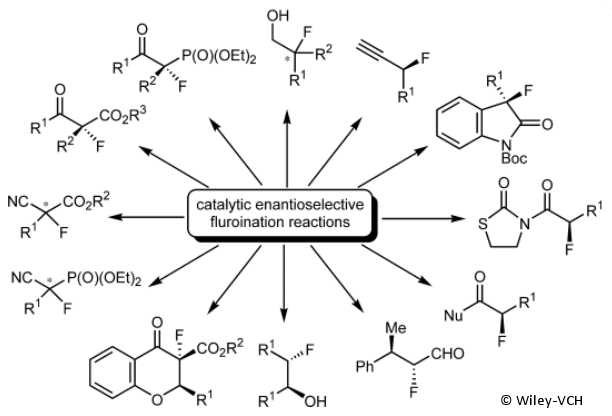In 1997, Jacques Fahy, Jean-Claude Jacquesy and co-workers synthesized vinflunine, a drug now used in the treatment of bladder cancer. The synthesis they employed represented a departure from the harsh reaction conditions generally considered to be necessary for the introduction of fluorine into a synthetic target. By employing the superacidic medium created by HF/SbF5, they demonstrated that fluorination can be achieved under milder and catalytic conditions with good functional group tolerance.
Since then, the amount of bioactive target-compounds that contain one or more fluorine atoms in active development has increased.
Selective addition of a fluorine atom or trifluoromethyl group to a biologically interesting molecule can significantly enhance the bioactivity, metabolic stability and pharmacokinetics of the parent compound. The strong C—F bond means that fluoro compounds exhibit greater stability than their halogenated analogues, resulting in less side reactions and a lower rate of metabolism. This is particularly evident in anesthetics, where the chlorine- and bromine-free polyfluoroethyl methyl ethers are the best anesthetics today. Their rate of metabolism is below 1 %, which poses significantly less risk to the patient than early modern anesthetics such as halothane (CF3CHBrCl), with its rate of metabolism of 20 %.
The increase in interest in fluorine-containing organic molecules has also created a need for additional synthetic routes and methodologies. In the last ten years, catalytic fluorination and electrophilic trifluoromethylation have seen significant advances, but many challenges still remain.
Advanced Synthesis and Catalysis highlights these new developments in a special issue of the journal dedicated to the next steps in organofluorine chemistry. It was edited by Antonio Togni, ETH Zurich, Switzerland.



